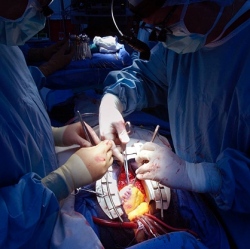
According to their paper published in the journal Arteriosclerosis, Thrombosis and Vascular Biology, in addition to changing high-density lipoprotein (HDL) from ‘good’ to ‘bad,’ the inhalation of car emissions activates other components of oxidation, the early cell and tissue damage that causes inflammation, leading to hardening of the arteries.
Emission particles such as those from vehicles are major pollutants in urban settings. These particles are coated in chemicals that are sensitive to free radicals, which have been known to cause oxidation. The mechanism behind how this leads to atherosclerosis, however, has not been well understood.
The team found that after 2 weeks of exposure to vehicle emissions, mice showed oxidative damage in the blood and liver – damage that was not reversed after a subsequent week of receiving filtered air. Altered HDL cholesterol may play a key role in this damaging process.
“This is the first study showing that air pollutants promote the development of dysfunctional, pro-oxidative HDL cholesterol and the activation of an internal oxidation pathway, which may be one of the mechanisms in how air pollution can exacerbate clogged arteries that lead to heart disease and stroke,” said senior author Prof Jesus Araujo of the University of California’s David Geffen School of Medicine.
One group of mice was exposed to vehicle emissions for two weeks and then filtered air for one week, a second was exposed to two weeks of emissions with no filtered air, and a third was exposed to only clean, filtered air for two weeks.
